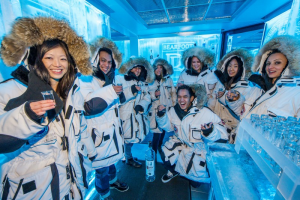Here in Europe - in the Alps at least - skiing started as a pastime in the early 20th century. Hotel owners would build a tow-rope ski lift along side a field next to their hotel in order to offer tourists something in winter too. Local farmers who couldn't farm their land due to the snow would start teaching skiing. This way, entire communities got into winter tourism.
In some areas - in France, mostly - ski resorts and villages were purpose-built in the 50s and 60s when people got more money to spend after WWII. Here, too, the local community was then and still is a major shareholder of the ski areas. In the more traditional valleys, even more so: local government has a major influence on the lift companies because there is a symbiotic relationship between the community (heavily relying on tourism, especially in winter, when farming is not really an option) and the lift company, who employ mostly local people in the running of the ski resort, ski schools, bars, restaurants, and hotels.
I have the sense that in the US (and Canada?) things started off a bit differently. More as a business opportunity in a big bang kind of way as opposed to the more organic process that we see in most European areas. Is that the case? And if so, what are the pros and cons of the way things originated and are managed today in US resorts?


